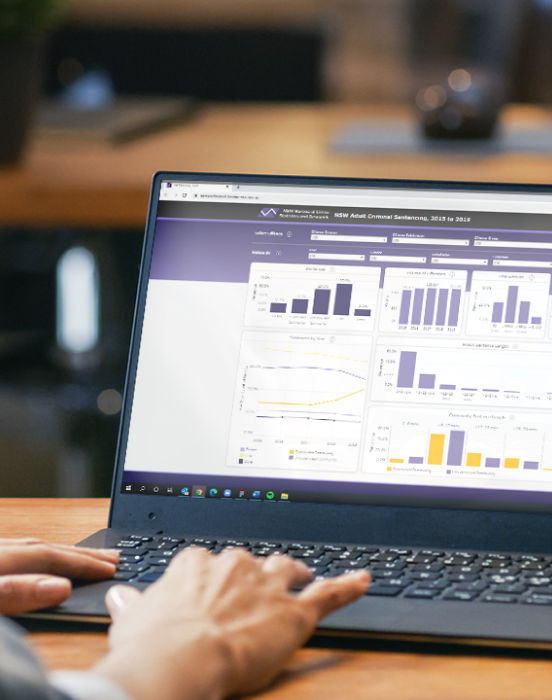Transforming Public Health Data: Helping BHI Enhance Data Publishing and User Experience

Value and Impact
Data governance improvements
A comprehensive process map to guide internal data governance improvements
Deep insights
BHI datasets to understand and guide user interaction
Visualisation platform
Selection and validation of Tableau as the preferred visualisation platform
Future vision
A vision for a future-state data portal to inform incremental development
Overview
The Bureau of Health Information (BHI) is a NSW government agency responsible for publishing independent reports and data on the performance of the public healthcare system. One of its core functions is to provide accessible online tools for data analysis.
Deepend partnered with BHI to assess and enhance their systems and processes for publishing datasets tailored to key audience segments. This engagement produced several foundational artefacts that now support ongoing improvements in data publishing and presentation, including:
-
Key audience personas and journey maps
-
Data governance and storage models
-
Standardised naming conventions
-
Evaluation and selection of data visualisation tools
-
User experience ideation for the chosen platform
Our Approach
The project was delivered in four strategic phases:
Current State Mapping
Deepend conducted workshops with BHI’s ICT and Analyst teams to understand existing data housing, publishing workflows, and organisational responsibilities. Key deliverables included:
-
A current-state process map for data capture, storage, and access
-
Mapping of dataset naming conventions
-
Identification of workflow inefficiencies and opportunities for improvement
User Research & Segmentation
To inform future portal design, Deepend interviewed representatives from BHI’s primary user segments. This phase produced:
-
Detailed personas outlining motivations and data interaction preferences
-
User journey maps highlighting pain points and opportunities for enhancement
Platform Evaluation
Deepend compared Tableau, Power BI, and Qlik Sense against BHI’s functional and publishing requirements. After assessing each platform’s strengths and limitations, Tableau was selected as the best fit.
Data Portal Ideation
The final phase involved wireframing a new data portal structure aligned with the needs of BHI’s audience segments and Tableau’s capabilities. This work helped visualise an ideal future-state experience for both internal teams and external users.
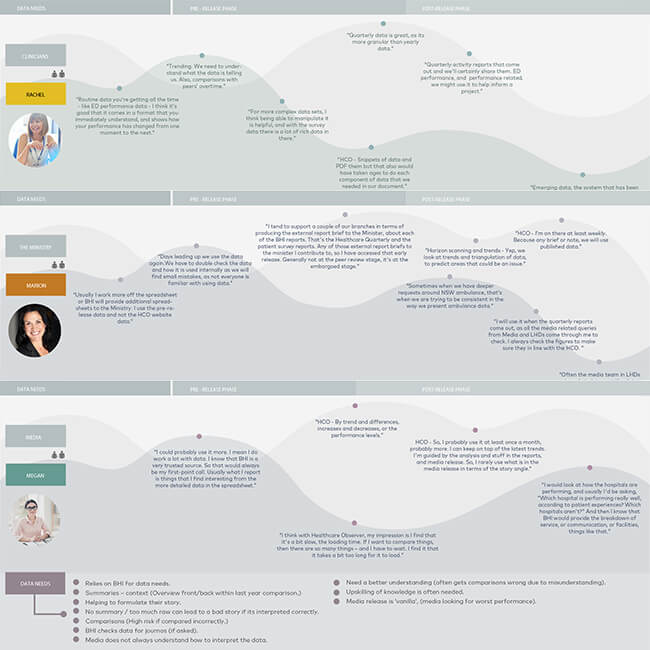
Visualising customer journeys for key segments
Mapping key user segments and understanding the differences in their data requirements.
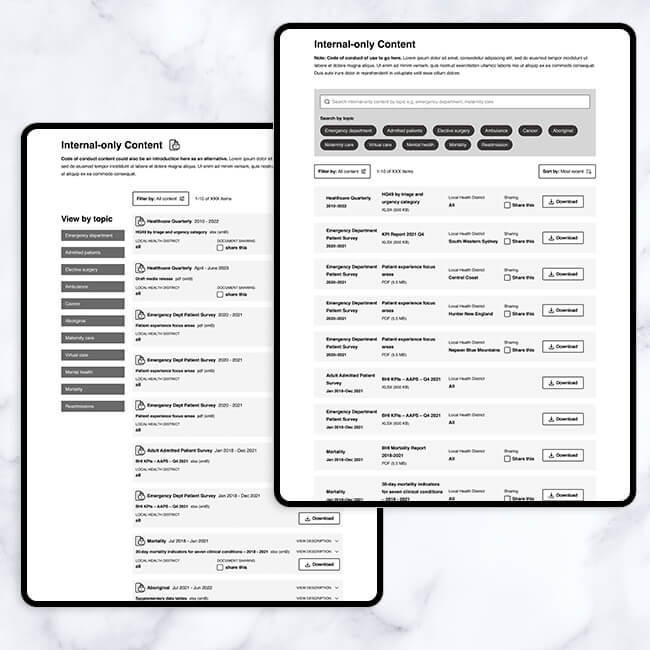
Key user experience visualised for several important audience segments
Creating clickable prototypes to showcase thinking about how different segments would interact with the reimagined data portal
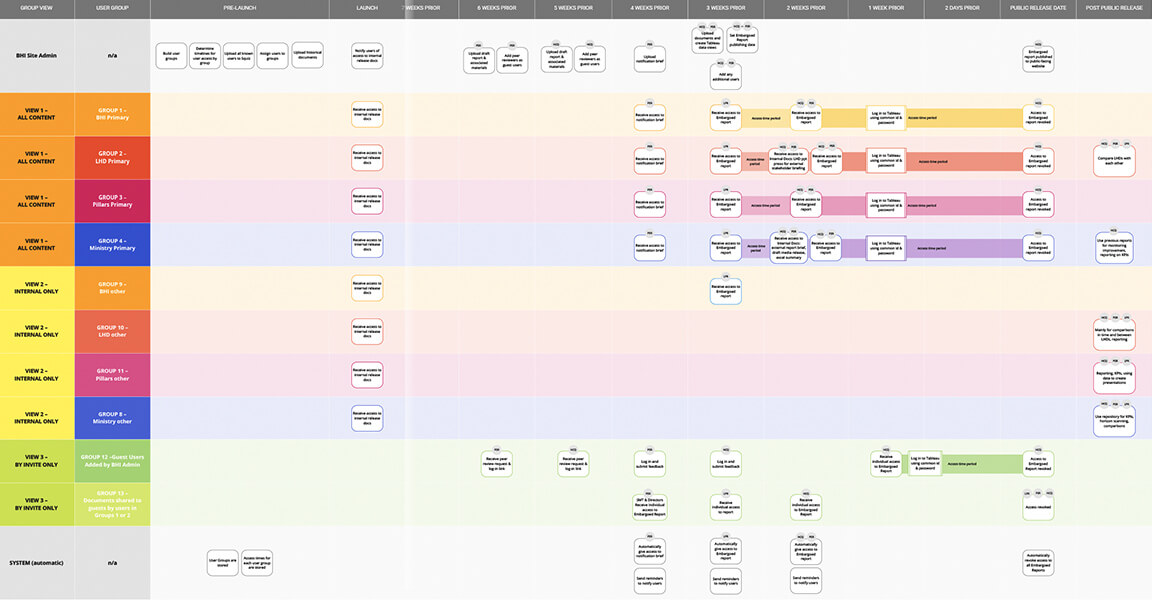
Defining UX principles
Establishing key principles to hold the final Tableau execution accountable to
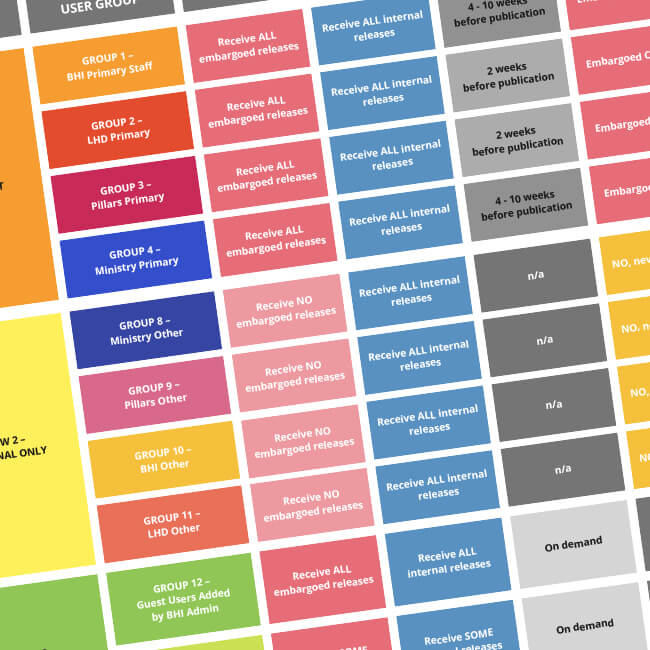
Key data governance improvements visualised
Mapping and showcasing key bottlenecks and procedural areas for improvement, and establishing an ideal future state to work towards
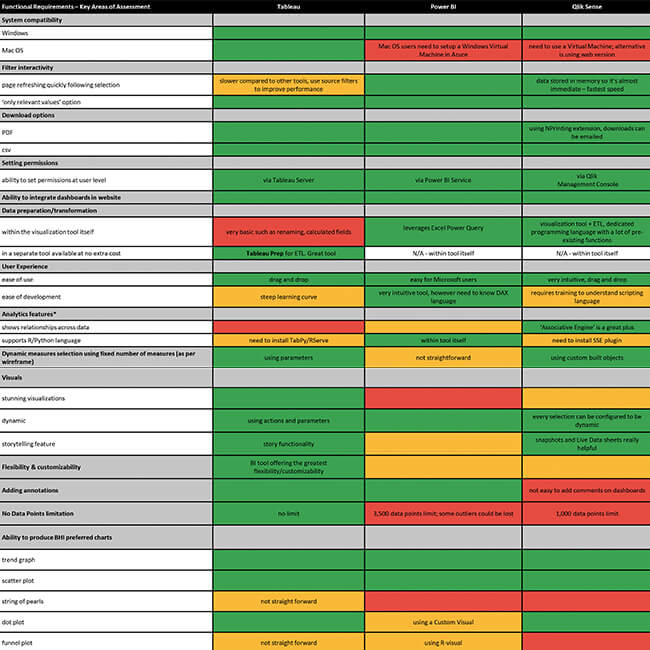
Technical feasibility assessment
Assessing 3 key platforms in Tableau, Qliksense and PowerBI for alignment with key functional and technical requirements, before making a recommendation.
Assessing and implementing the preferred data visualisation tool
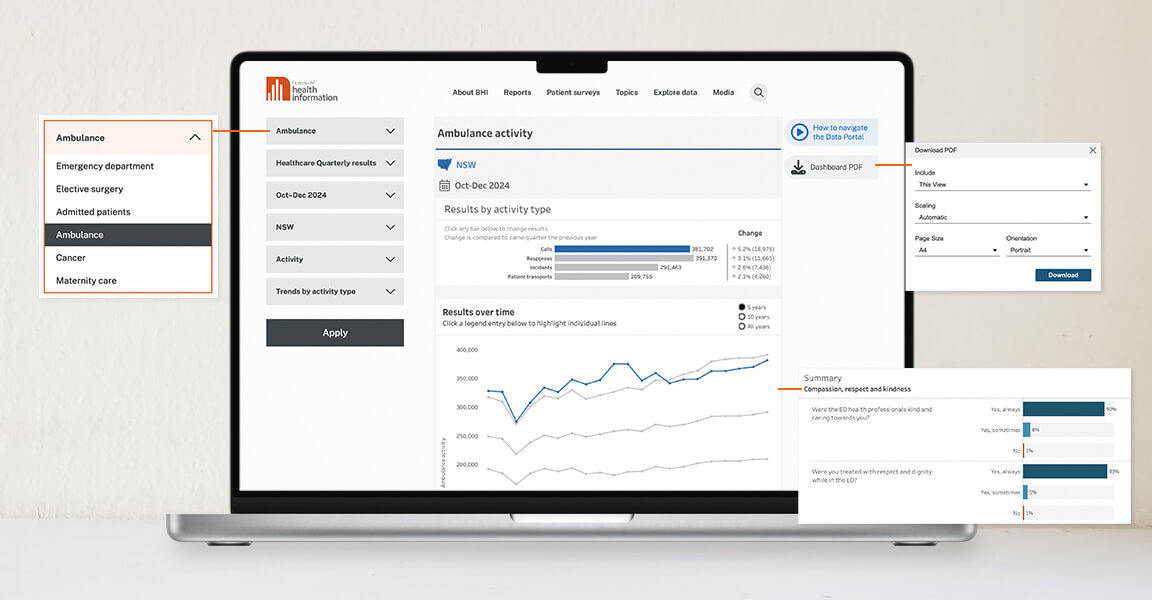
Data visualisation tool
Working closely with BHI internal resources to build out a newly ideated data portal
Outcomes
This project showcases Deepend’s holistic approach to systems analysis, user-centred design, and continuous improvement in complex data environments.
Related Work
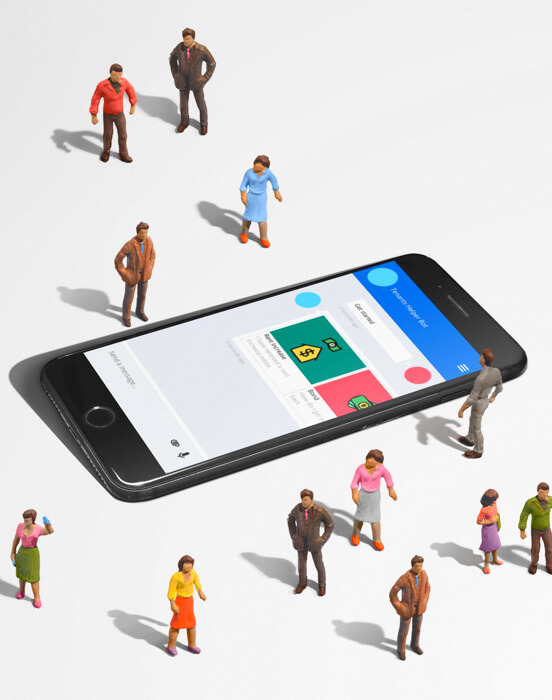
Using artificial intelligence to better guide users and lighten the load on a call centre under pressure
